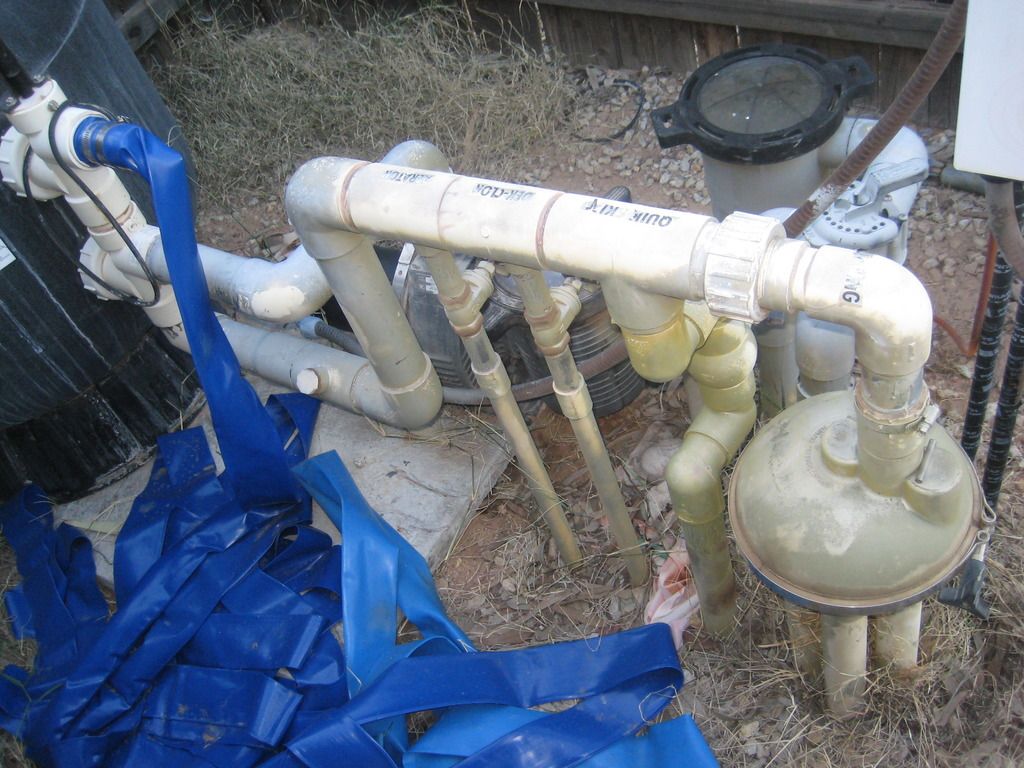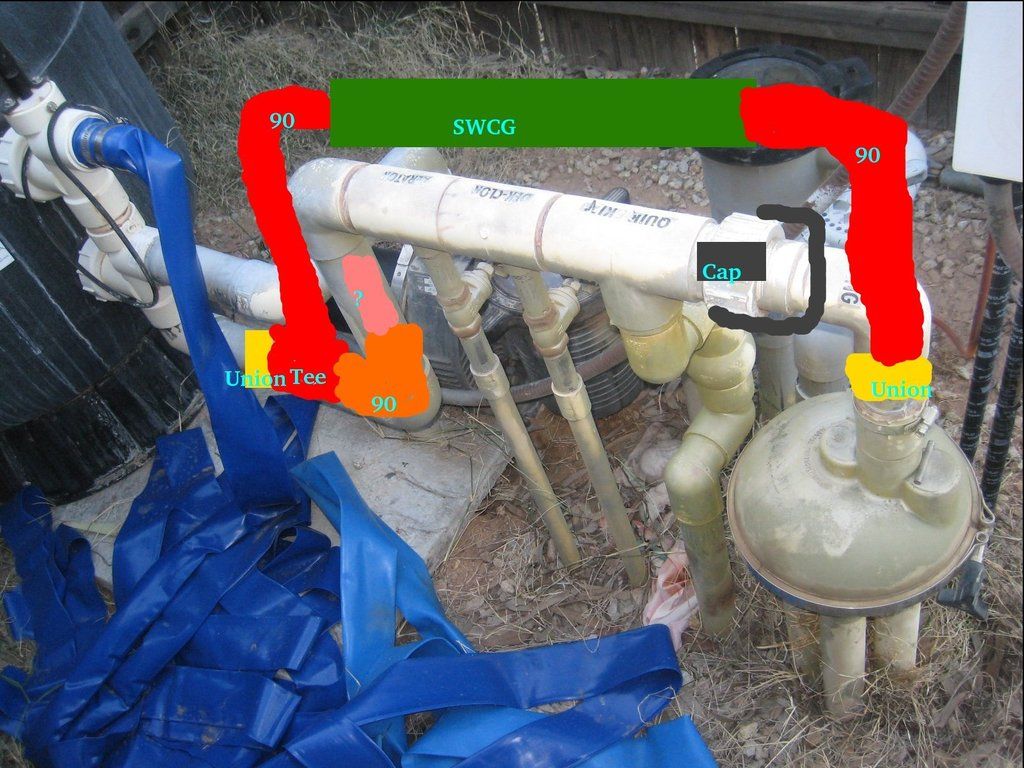- Apr 10, 2014
- 16
- Pool Size
- 11000
- Surface
- Plaster
- Chlorine
- Salt Water Generator
- SWG Type
- Hayward Aqua Rite (T-15)
Hi everyone, I'm hoping you can answer a few questions and double check my plans for a SWCG and installation.
Background: I'm near Phx, AZ so it's sunny 365ish days a year and our water has high calcium content. The pool has been relatively trouble free with bleach and acid so far (only been in this house/maintaining this pool for a year). As is typical, the pH trends upward, but is handled with ~1-2 gallons of acid a month. I've recently added Borates and I'm going to try a TA of 60 to combat the rise and lower acid use. First off, if anyone sees a reason why I shouldn't go with a SWCG let me know, that is why I posted here, to see if I missed anything. The reason for purchasing a SWCG system is to lessen the daily chore of adding bleach, also in the long run to break even in cost, all the while reducing chances for me to mess up and have to SLAM.
I am leaning towards a Hayward Aquarite T-15 (40K) and buying the control unit package and cell seperately to lower the cost. My pump run time is about 2hrs in winter and 4-6hrs in summer. I might be ok with a longer run time due to wind and a neighbor's messy tree. So, is that a good model for this usage?
I researched previous threads and reviews on SWCGs for common failures and costs. While the Hayward is more expensive up front, aftermarket parts are cheap and plentiful including cells and it seems to be reliable. I can solder and while I write software, electronics don't scare me (thermistor/inrush limiter failures). But, if there is a brand I missed let me know. I do see I can get a Si-45+ from Circupool for the same price (with the upgrade deal), but past failures threads kind of worry me.
Second, question, I have two decorative rocks (Click for Pool Photo) do I need to seal those?
Finally, the installation. As is somewhat typical, I was left no room for pipe modifications (see picture1 and picture2). I'm good with pvc and plumbing so that isn't a concern. The problem is I need at least 12" and I'm not sure how much more (length of T-15 with flow sensor) I will need in the end. I only have 8" in the portion that is vertical. So, what I'm thinking of doing is cutting in that straight vertical portion adding a union and T and then going up to a 90 then salt cell then 90 down to floor cleaners. I would then dead end that whole line of seldom used items. I embedded an admittedly bad picture. I'm thinking the hardest part will be at the End cap and the Tee fitting. I will likely have to shave out the old pipe in the fittings to put a plug and piece of pipe in respectively. I've done it before in 2" 60+ psi applications, but only because I had to.
I welcome any and all suggestions.

Background: I'm near Phx, AZ so it's sunny 365ish days a year and our water has high calcium content. The pool has been relatively trouble free with bleach and acid so far (only been in this house/maintaining this pool for a year). As is typical, the pH trends upward, but is handled with ~1-2 gallons of acid a month. I've recently added Borates and I'm going to try a TA of 60 to combat the rise and lower acid use. First off, if anyone sees a reason why I shouldn't go with a SWCG let me know, that is why I posted here, to see if I missed anything. The reason for purchasing a SWCG system is to lessen the daily chore of adding bleach, also in the long run to break even in cost, all the while reducing chances for me to mess up and have to SLAM.
I am leaning towards a Hayward Aquarite T-15 (40K) and buying the control unit package and cell seperately to lower the cost. My pump run time is about 2hrs in winter and 4-6hrs in summer. I might be ok with a longer run time due to wind and a neighbor's messy tree. So, is that a good model for this usage?
I researched previous threads and reviews on SWCGs for common failures and costs. While the Hayward is more expensive up front, aftermarket parts are cheap and plentiful including cells and it seems to be reliable. I can solder and while I write software, electronics don't scare me (thermistor/inrush limiter failures). But, if there is a brand I missed let me know. I do see I can get a Si-45+ from Circupool for the same price (with the upgrade deal), but past failures threads kind of worry me.
Second, question, I have two decorative rocks (Click for Pool Photo) do I need to seal those?
Finally, the installation. As is somewhat typical, I was left no room for pipe modifications (see picture1 and picture2). I'm good with pvc and plumbing so that isn't a concern. The problem is I need at least 12" and I'm not sure how much more (length of T-15 with flow sensor) I will need in the end. I only have 8" in the portion that is vertical. So, what I'm thinking of doing is cutting in that straight vertical portion adding a union and T and then going up to a 90 then salt cell then 90 down to floor cleaners. I would then dead end that whole line of seldom used items. I embedded an admittedly bad picture. I'm thinking the hardest part will be at the End cap and the Tee fitting. I will likely have to shave out the old pipe in the fittings to put a plug and piece of pipe in respectively. I've done it before in 2" 60+ psi applications, but only because I had to.
I welcome any and all suggestions.




